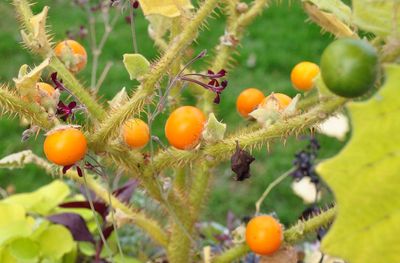Pests of Naranjilla
The naranjilla plant is a spreading, herbaceous shrub that grows to 8 feet (2.5 m.) high. It is native to South America and is cultivated throughout Latin America for its small orange fruit with a thick, leathery peel. The naranjilla fruit are smaller than oranges, usually only 2 ½ inches (6.25 cm.) across, but they are filled with yellow-green, juicy pulp. It is delicious, tasting like a pleasant mixture of pineapple and citrus. This could be a good fruit tree choice for backyard orchards or even small farms. But you’ll want to understand its vulnerability to naranjilla pests before planting.
Bugs that Eat Naranjilla
Like almost every other plant, naranjilla can be attacked by pests. The bugs that eat naranjilla fruit and foliage can usually be controlled easily in your home orchard. Naranjilla pests include aphids, whiteflies, and spider mites, but these can be treated with neem oil sprays or other non-toxic products. The most problematic pests of naranjilla are those that attack the plant’s roots. Its vulnerability to root knot nematodes is a serious problem and research is underway to find effective solutions to this.
Combatting Naranjilla Pest Problems
Root knot nematodes (Meloidogyne spp.) are the chief enemies of the naranjilla plant, and they can create serious naranjilla pest problems. The nematodes are soil-dwelling pests that attack the roots of the plant. Growers and scientists are working to find solutions to this naranjilla pest problem. One solution is applying nematicide on the soil each time nematodes are spotted, but this is an expensive alternative for small farmers. Biologists are working to hybridize the plant with nematode-resistant wild relatives to combat these destructive pests of naranjilla. In some areas, growers are grafting the trees to nematode-resistant rootstocks. Cultural measures to reduce nematode populations can include mulching and frequent plowing during the hot, dry spells in which nematode action increases.
